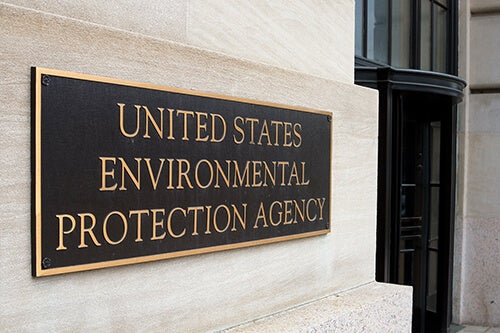Companies in scope of the Toxic Substances Control Act (TSCA) have new substances to phase out of their products, and the tight deadline is taking many by surprise. Do you have the technology to quickly discover which of your products are at risk?
On January 6, 2021, the U.S. Environmental Protection Agency (EPA)’s Office of Pollution Protection and Toxics (OPPT) published the much-awaited final rules for Section 6(h) of TSCA. The update restricts companies from placing products containing any of five new toxic substances on the market.
Known as persistent, bioaccumulative, or toxic (PBT) chemicals, this grouping of restricted substances includes:
- Phenol, isopropylated phosphate (3:1) (PIP 3:1), a phosphate-ester flame retardant, anti-wear additive, and plasticizer.
- Decabromodiphenyl ether (DecaBDE), a brominated flame retardant.
- 2,4,6-tris(tert-butyl)phenol (2,4,6-TTBP), a lubricant and fuel additive.
- Hexachlorobutadiene (HCBD), a chlorinated hydraulic, heat transfer, or transformer fluid.
- Pentachlorothiophenol (PCTP), a chlorinated plasticizer.
Unless the agency publishes exclusions under a ruling, most of the substances will be restricted to a zero percent threshold under the EPA’s definition of an “Article,” which is similar to requirements under the Registration, Evaluation, Authorisation, and Restriction of Chemicals (REACH) Regulation. However, it’s important to note that these new substances aren’t restricted by the REACH Regulation, so only those few companies with full material disclosures (FMDs) for their products will be immediately able to evaluate this risk.
Of the five newly-restricted substances, PIP 3:1 may have the greatest industry impact. This substance may replace older restricted brominated flame retardants in some products. It is also a required additive in thermoplastics and resins used to meet electrical safety standards and rubberized materials (e.g. seals, gaskets) used in hydraulic and fuel applications.
The new TSCA changes came into force extremely quickly — what do you need to do right now to manage your risk? Join our on demand webinar, Collecting Missing Data to Meet the New TSCA Deadlines, to learn what steps you need to take.
Fast-Approaching TSCA Compliance Deadlines
The final rules were passed on February 5, 2021, and quickly came into force on March 6, 2021, for product manufacturers. That means if you don’t already have this data, you are potentially non-compliant with requirements needed for U.S. market access. However, if you’re a distributor for some of the products containing the substances, you may have until January 6, 2022, or later.
Many companies weren’t expecting the fast action. On February 8, the EPA responded to industry pressure, stating it is “aware of the concerns of these rules, including implementation issues, that have been raised by a range of stakeholders and may consider additional measures, approaches, or revisions that build upon the steps taken thus far.”
A subsequent March 8 release commenced a six-month no-action comment period for restrictions associated with PIP 3:1, and later issued a request for comment on March 16, 2021. This delays enforcement for usage of PIP 3:1 in parts and products until September 4, 2021, but does not change requirements for recordkeeping or downstream customer notifications.
Section 6 substances are prohibited and subject to penalties under 15 U.S.C. 2615 and Title 18 of the U.S. Code. Non-compliance can lead to civil penalties up to $50,000 USD for each day of violation, imprisonment of up to one year, or even both.
Due to the wide use of these substances, companies in the electronics, industrial equipment, medical, aerospace and defense, and automotive industries should immediately evaluate their product landscape.
Updating Your TSCA Compliance Program
Companies that manufacture and place products containing PIP 3:1 on the market are expected to notify their customers of these restrictions. If you’re aware of them, you need to immediately engage your supply chain to identify which of your products could contain these five substances over the restricted threshold.
Assent’s product compliance solution collects declarations for these five substances, existing restricted substances, and any other new requirements your team may have to navigate.
Our technology and supplier engagement teams make it easy for your vendors to quickly respond by providing them an intuitive platform and 24/7, multilingual support for data submissions. And as new substances are restricted, our regulatory experts will keep you updated and spearhead the necessary changes to your platform and services.
For more information about how Assent will help you stay on the market when new restrictions are published, contact our experts.









